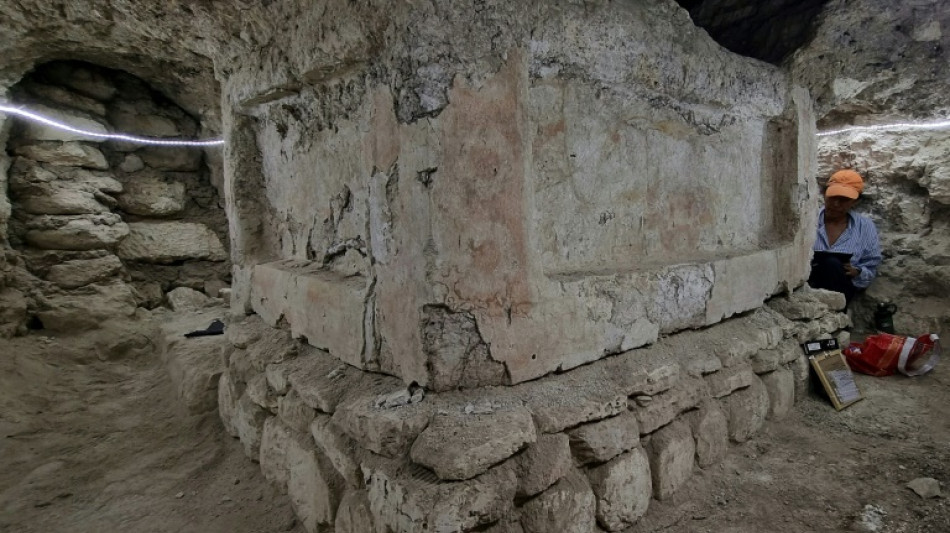
RBGPF
60.2700


A 1,000-year-old altar from Mexico's ancient Teotihuacan culture has been discovered in the erstwhile Mayan city of Tikal in Guatemala, providing further proof of ties between the two pre-Hispanic societies, archaeologists said Monday.
In recent years, several artifacts found at Tikal, Guatemala's biggest archaeological site, testify to the influence of Teotihuacan -- an important site of cultural exchange and innovation in Classic Mesoamerica -- on Mayan civilization.
Dated to between 400 and 450 AD, during the Classic Mayan period, the altar was found in what used to be a house in an elite residential complex at Tikal, situated in the jungle near the Mexico border.
It represents the Teotihuacan storm goddess, archaeologist Lorena Paiz of the Southern Tikal Archaeological Project told reporters.
The rectangular structure 1.1 meters high and 1.8 meters wide (3.6 feet by 5.9 feet) is made of earth, covered either with stucco or plaster.
It shows a painted face with a tasseled headdress, a necklace, and other Teotihuacan elements.
Paiz said it contained "a multitude" of characteristics that were reminiscent of central Mexican influences.
"It is the strongest evidence we have to date, possibly of (Mayan) people who were deeply familiar with Teotihuacan culture," said fellow archaeologist Edwin Roman.
The residential complex where the altar was found was uncovered in 2019 after a search of the dense jungle using laser beam technology, said Ana Claudia Monzon, an official with the Guatemalan Ministry of Culture.
Tikal, a UNESCO World Heritage Site, reached its peak between 200 and 900 AD when Mayan culture encompassed parts of what are now Guatemala, Mexico, Belize, El Salvador and Honduras.
Teotihuacan, famous for its pyramids of the Sun and the Moon, is located about 40 kilometers (25 miles) northeast of Mexico City.
That culture reached its peak between 100 and 600 AD.
J.Thompson--ThChM